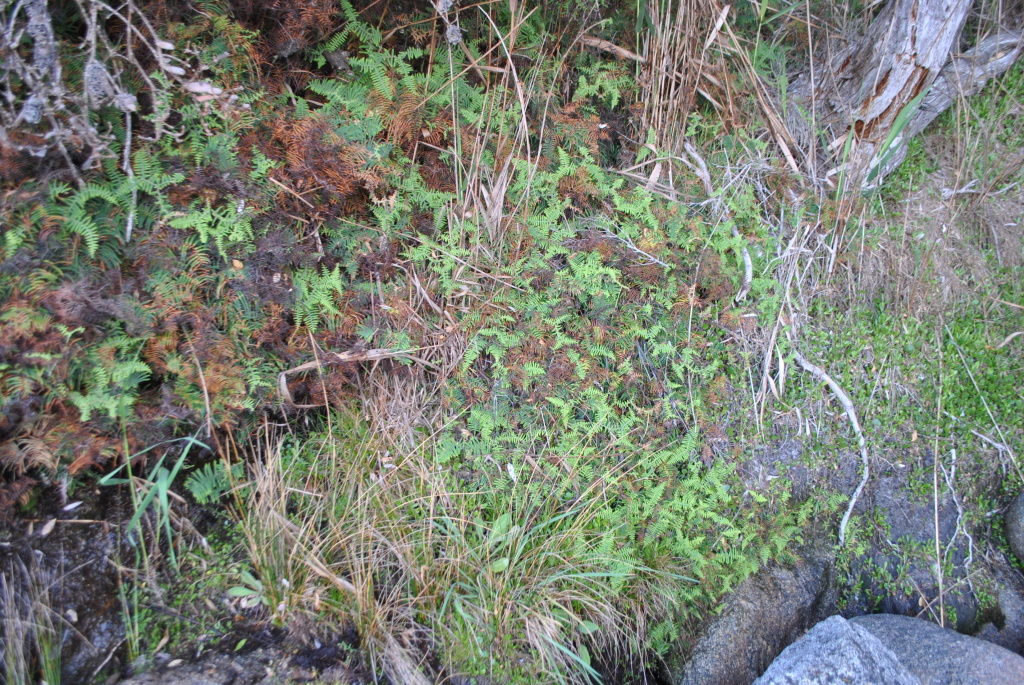Gleichenia rupestris
R.Br.Rachis of major branches glabrous, with occasional, scattered fringed scales. Ultimate branches linear, 3–5 cm long, with close-set pinnules; undersurface of pinna-rachis without hairs or scales, usually glaucous; uncoiling tips (and young rachises) glaucous, with scattered fringed scales. Pinnules c. 1–2 mm long, oblong-ovate to semicircular, blunt, lower surface glaucous, flat or slightly concave (not inrolled on all edges to make a pocket). Sori with 3–4 sporangia grouped around central projection; sporangia dull, yellow-brown.
GGr, EGL. Also Qld, NSW. Occurs along the east coast of Australia, extending south to far eastern Victoria (Wingan Inlet area and Sandpatch Wilderness) where uncommon, occurring in seepage areas of sea-cliffs.
The glaucous ultimate rachises and pinnule undersurface are distinctive, although the degree of glaucousness is variable. The more or less glabrous rachises and branches are diagnostic.
Entwisle, T.J. (1994). Ferns and allied plants (Psilophyta, Lycopodiophyta, Polypodiophyta). In: Walsh, N.G.; Entwisle, T.J., Flora of Victoria Vol. 2, Ferns and Allied Plants, Conifers and Monocotyledons, pp. 13–111. Inkata Press, Melbourne.
 Spinning
Spinning

